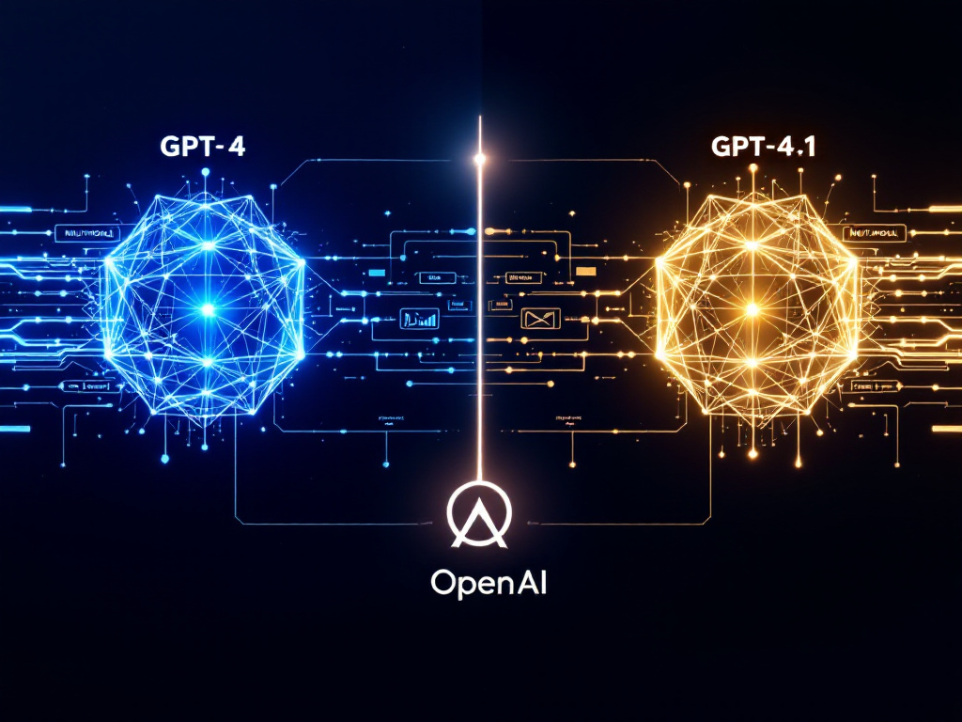OpenAI Set to Unveil Enhanced GPT-4.1 AI Model Amid High Expectations
Introduction: The Next Step in AI Evolution
OpenAI is on the verge of launching GPT-4.1, a significant iterative update to its leading artificial intelligence model. Anticipated potentially as early as next week, this release aims to build upon the success of GPT-4, introducing enhanced performance, scalability, and user-focused features. Reports, including insights from The Verge, suggest GPT-4.1 might arrive alongside smaller “mini” and “nano” variants, although OpenAI faces ongoing capacity challenges that could influence the exact timing. CEO Sam Altman positions GPT-4.1 as a crucial bridge technology, refining current capabilities while the company gears up for the more revolutionary GPT-5 expected later in 2025.
Key Advancements Expected in GPT-4.1
GPT-4.1 promises several key improvements over its predecessor, focusing on reliability, versatility, and safety.
Enhanced Accuracy and Reliability
A primary focus for GPT-4.1 is reducing errors and nonsensical outputs (“hallucinations”). This push for greater accuracy aims to provide users with more dependable and consistent information, making the AI model more trustworthy for critical applications.
Improved Multimodal Capabilities
Building on GPT-4’s ability to process both text and images, GPT-4.1 is expected to further refine these multimodal functions. This includes advancements in visual question answering, detailed image captioning, and sophisticated analysis of documents containing mixed media, potentially enhancing tasks like interpreting complex charts or diagrams alongside text.
Optimized Performance and Speed
Users can anticipate faster processing times and improved computational efficiency with GPT-4.1. This optimization should lead to quicker responses and better handling of complex contextual tasks. Hints also suggest potential improvements in areas like rapid audio input response, expanding on features seen in models like GPT-4o.
Advanced Safety Measures and Customization
OpenAI continues to prioritize AI safety. GPT-4.1 is expected to incorporate superior safety features designed to mitigate biases and reduce the generation of harmful content. Furthermore, enhanced steerability and customization options may offer developers more control over the model’s output.
Multimodal AI in Practice: Real-World Applications
The enhanced multimodal functionality of GPT-4.1 unlocks practical applications across various sectors. Users could upload an image of a complex machine part for identification and troubleshooting steps, or submit a medical scan for preliminary analysis (complementing expert review). In education, it could provide rich, contextual explanations for visual diagrams or historical photographs. Creative industries might leverage it for generating detailed descriptions of visual scenes or translating artistic concepts between text and image formats.
Strategic Importance and Market Context
Bridging the Gap to GPT-5
GPT-4.1 serves as an important incremental upgrade, allowing users to benefit from immediate improvements without waiting for the next major generational leap. It provides a stable platform for OpenAI to gather feedback and refine features ahead of the more ambitious GPT-5 launch.
Scalability and Wider Accessibility
Addressing the capacity constraints faced during the GPT-4 rollout is a key goal. OpenAI aims to deploy GPT-4.1 with enhanced infrastructure to support a growing user base across different tiers, potentially including free, Plus, and enterprise plans, ensuring broader access to advanced AI tools.
The Competitive AI Landscape
The launch occurs amidst fierce competition in the artificial intelligence space. OpenAI competes with major players like Google DeepMind, Anthropic, Meta AI, Mistral AI, IBM (with Watsonx), and others, all rapidly innovating. GPT-4.1’s success will depend on its ability to offer compelling advantages in performance, features, and accessibility within this dynamic market.
Potential Impact and Challenges
Economic and Industry Implications
GPT-4.1’s enhancements could further accelerate AI adoption, potentially impacting workflows across numerous industries by augmenting tasks previously done by humans. Its capabilities might drive new business models and create opportunities in fields ranging from financial analysis to content creation.
Operational Hurdles
Despite planned improvements, OpenAI still faces significant operational challenges. Capacity limitations could lead to service slowdowns or staggered availability upon launch. Ensuring reliable access, particularly for enterprise clients, remains a critical factor for widespread adoption. Addressing existing limitations like knowledge cutoffs (GPT-4’s knowledge is limited post-September 2021) and vulnerability to adversarial prompts will also be important.
Conclusion: An Important Step Forward for AI
The upcoming launch of GPT-4.1 marks a significant milestone in OpenAI’s development roadmap. By refining accuracy, enhancing multimodal interaction, boosting performance, and strengthening safety protocols, GPT-4.1 aims to deliver tangible benefits over GPT-4. While serving as a bridge to the highly anticipated GPT-5, this release provides immediate value to users and developers. Its reception and performance will be closely watched as it navigates operational challenges and intense market competition, further shaping the trajectory of accessible artificial intelligence.

GPT-4 demonstrated advanced image understanding and generation refinement, capabilities expected to see further improvement with the launch of GPT-4.1.
